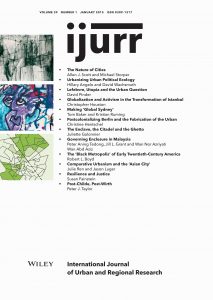The urban sociology literature has identified three types of segregated spaces: the ghetto, the enclave and the citadel. While the ghetto stems from a high constraint, the enclave accounts for a more intentional form of segregation and the citadel refers to a deliberate attempt to exclude undesirable populations. While these three figures are often contrasted in the American literature, this article focuses on a specific type of neighbourhood that combines all of these: the upper-class minority neighbourhood. By introducing the main results of an interview study I conducted in the Indian city of Aligarh, I show that Muslim upper-class residential choices are informed by contradictory feelings: while the threat of Hindu–Muslim riots forces them to segregate in homogenous neighbourhoods (the ghetto), their segregation also stems from a genuine desire to live in an Islamic environment (the enclave). Finally, the Muslim upper classes also indulge in a sharp process of socio-spatial differentiation from their poorer coreligionists (the citadel). These processes of compelled segregation, self-aggregation and social distancing lead to an enduring spatial concentration along religious and class lines. The simultaneity of these three logics indicates that the categories of the ghetto, the enclave and the citadel, framed in reference to the American context, can be applied to the Indian city of Aligarh if understood as dynamic processes rather than static spatial units. Such a reformulation allows theory to travel across the North–South divide in a more productive way.
Details
Written by:
Juliette Galonnier
Digital Object Identifier (DOI)
10.1111/1468-2427.12203
About DOI
Read full article as PDF
Read full article as HTML
See the references for this article

